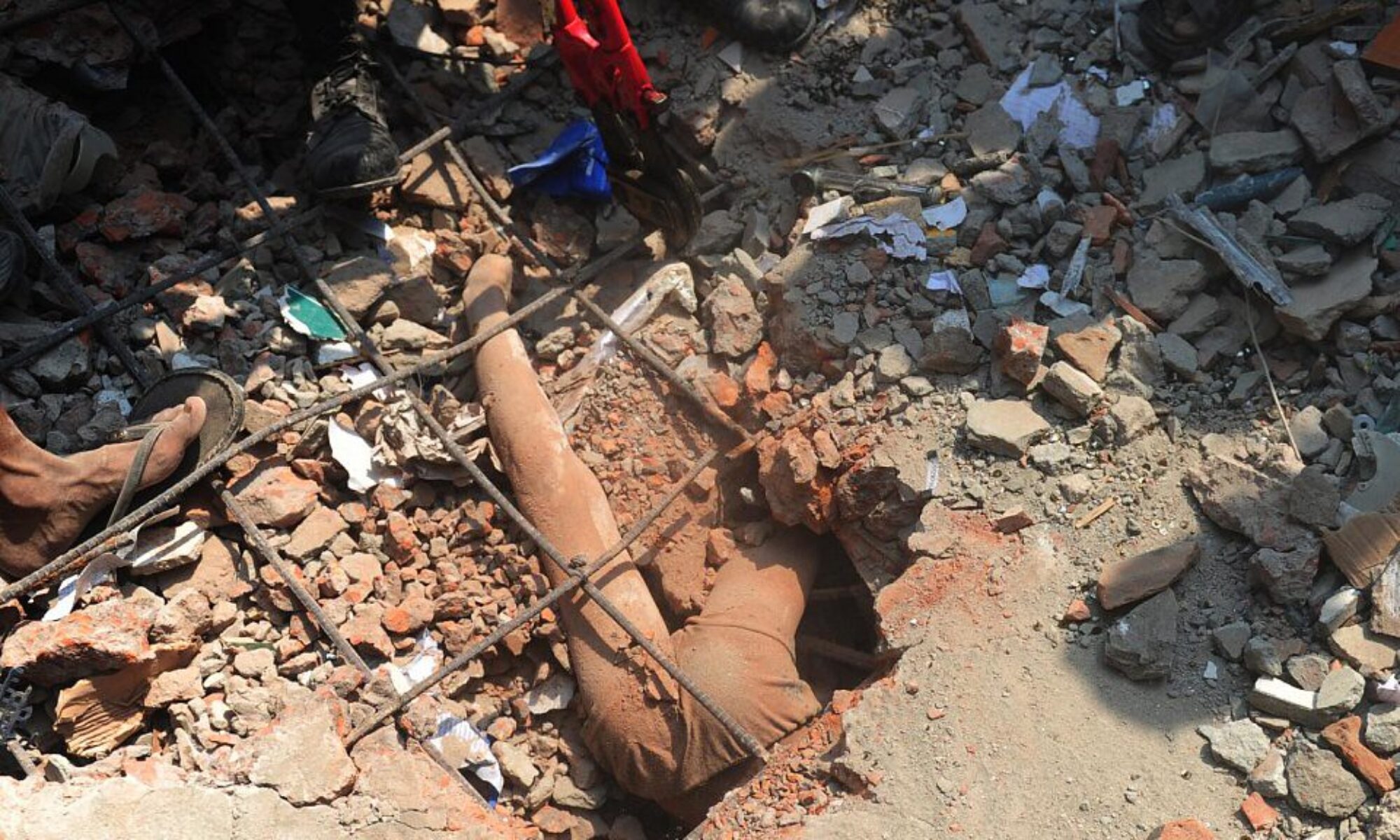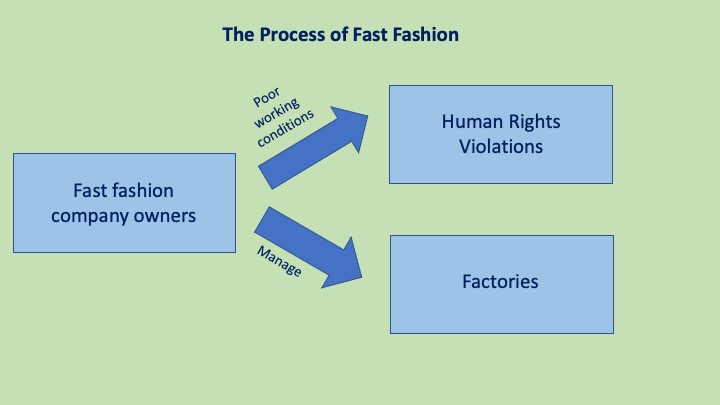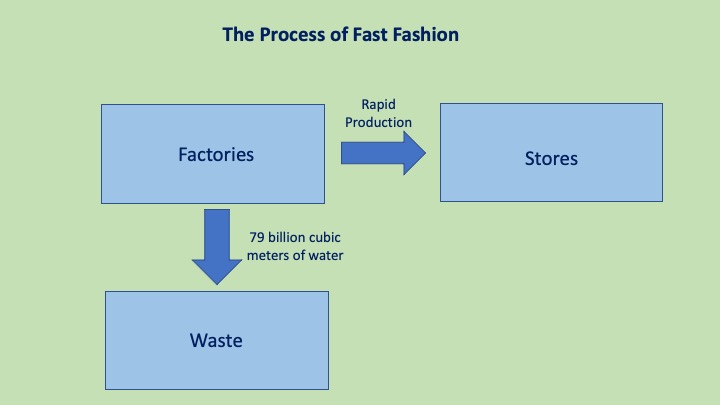The process of fast fashion first starts and end with the fast fashion companies and their CEOs. Forbes magazine has reported that H&M CEO, Karl-Johan Persson, has a net worth of 1.8 billion dollars (Dollan 2021). More significantly is Zara CEO, Amancio Ortega, who is valued at 74.6 billion dollars, and is growing at about 5.5 billion dollars a year (Forbes 2021). These are astounding numbers considering how recent the fast fashion industry is and it illustrates just how fast it is are growing.
The fast fashion companies first need to outsource their labor to other countries that have less to no labor laws nor environmental regulations so that they can operate at the fastest rate possible, while obtaining the most profit. They usually set up companies in Bangladesh, Vietnam, Argentina, Brazil, China, India, Indonesia, Philippines, Turkey, Vietnam and Pakistan (Mulhern 2019) . In addition, a recent 2018 U.S. Department of Labor report found evidence of forced labor, along with child labor in the fashion industries of Argentina, Bangladesh, Brazil, China, India, Indonesia, Philippines, Turkey, and Vietnam.
Approximately 75 million workers make clothes for us today, and 80 percent of those people are women aged 18-24 (Reichart 2019). In addition, these women will earn about 96 dollars a month (Reichart 2019).
Next, these factories will also produce massive amounts of waste, along with using around 79 billion cubic meters of water (Waste 360). It takes 2,700 liters of water to make one cotton shirt which is two and half years of drinking water for one person (WWF 2013). In addition, a report from the UN Environment Programme, shows that 20% of global wastewater comes from textile dyeing, and that the fast fashion industry produces 92 million tons of clothes related waste a year (Mulhern 2019). This is approximately one and half empire state buildings of waste (Mulhern 2019). It is also important to note that the fast fashion industry has twice the CO2 consumption rate compared to the flight and maritime industries combined (Mulhern 2019).
The rapid production of clothes due to very few environmental and labor regulations, leads to rapid sales of clothes from stores to consumers. The average consumption of clothes has gone up significantly, as the average consumer bought 60% more clothes in 2014 than in 2000 (Reichart 2019). Surprisingly, the waste from thrown out clothes equates to one garbage truck of clothes being burned every second (Mulhern 2019), and the total amount of money lost from clothes not being recycled is equal to 500 billion dollars (Ellen MacArthur Foundation ).
Keeping all of these terrifying statistics in mind, brings us to the idea that the fast fashion industry is growing fast. By 2050 it is expected to be have increased in value by 400% from 2018 (OECD 2018). This entails that all of the waste and effects from fast fashion will also grow rapidly as well if change is not demanded.
Sources
OECD Data. 2018. GDP Long-term Forecast. OECD.
Dolan K.A., Wang J., Peterson-Withorn C. 2021. World’s Billionaires List. Forbes.
Mulhern, O. 2021. The 9 Essential Fast Fashion Statistics. Earth.org.
Putting the brakes on fast fashion. UN Environment Programme. 2018.
The Impact of a Cotton T-shirt. WWF. 2013.
The Real-time Billionaires List. Forbes. 2021.
Can Fast Fashion Ever be Sustainable? Waste360. May 2020:N.PAG. Accessed September 28, 2021.




